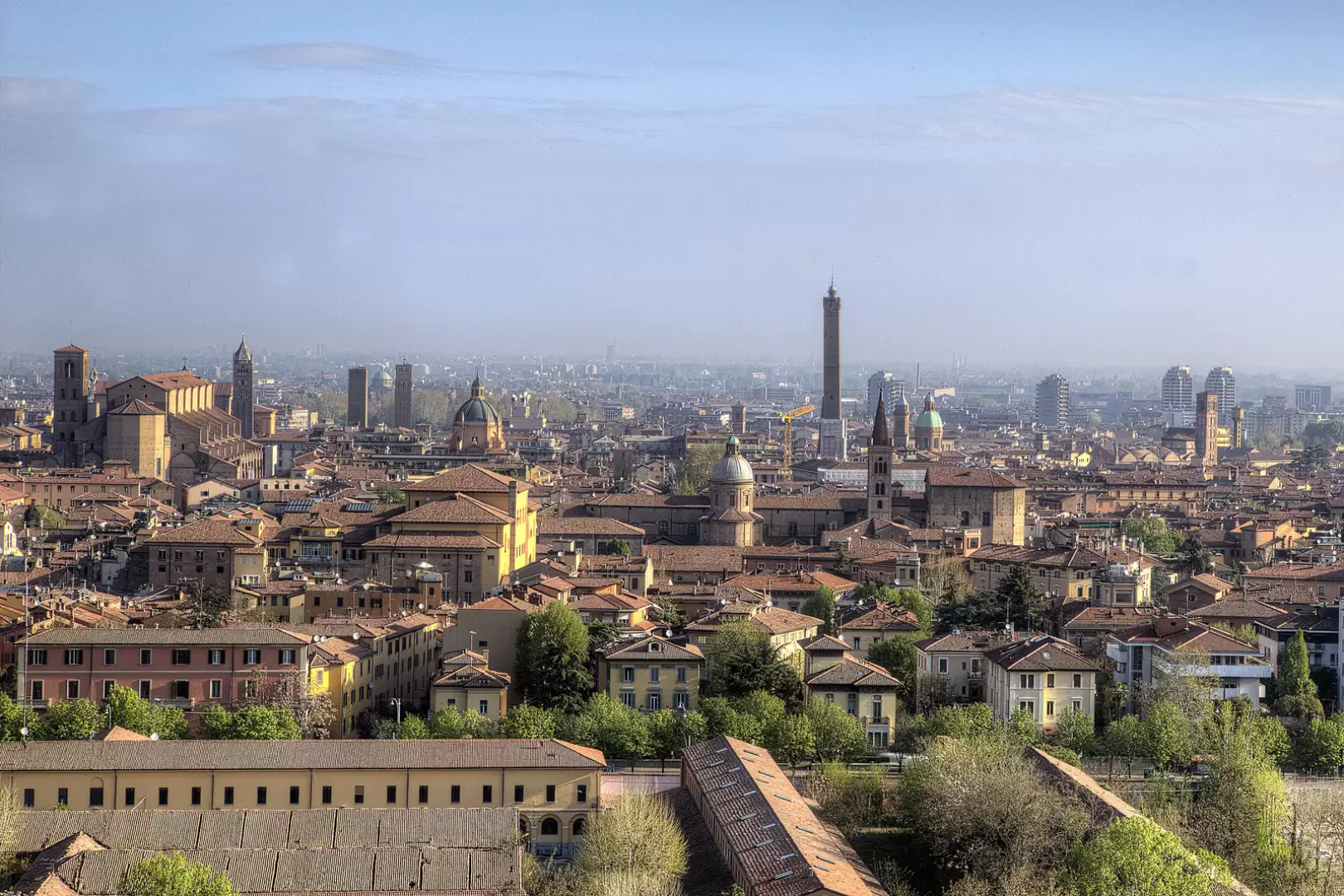Bologna

Access
Bologna is a strategic transport hub: the 'Guglielmo Marconi' international airport provides connections to major European cities, while the railway station - one of the busiest in Italy - offers high-speed trains to Milan, Florence, Rome and Venice. The city is a motorway crossroads thanks to the intersection of , and .
.Introduction
Bologna, the capital of Emilia-Romagna, is one of the most significant centres of central-northern Italy, located in the Po Valley in a transitional position between the plains and the foothills of the Tuscan-Emilian Apennines. The city is located along fundamental connection axes, which historically favoured its growth as a hub between northern and central Italy. Bologna's historical and cultural heritage is reflected in an urban stratification that includes Etruscan, Roman - with the colony of Bononia -, Medieval and Renaissance remains, as well as one of the oldest universities in the West, founded in 1088. This tradition has given Bologna the titles of 'la Dotta, la Grassa and la Rossa', a synthesis of its university, gastronomic and social vocation.
Description
The municipal territory stretches from the richly cultivated plains to the hillsides that anticipate the Apennines; these allow us to observe an environmental variety characterised by the presence of watercourses such as the Reno and Savena, as well as an agrarian landscape that has always sustained the local identity. Distinctive features include the porticos, a UNESCO World Heritage Site since 2021 and stretching for over 38 km, as well as the medieval towers of the Asinelli and Garisenda, and one of the largest and most well-preserved historic centres in Italy.
Historically speaking, Bologna was a fundamental medieval commune, the scene of struggles between noble families and the seat of law schools. In the Renaissance, the city experienced a strong expansion thanks also to the papal influence; in the 20th century it distinguished itself for its political activity, its contribution to the Resistance and a strong industrial and cultural development.
The contemporary economy is based on a plurality of sectors: mechanics, automotive, advanced tertiary, services, trade and tourism, with important industrial districts. The culinary tradition is fundamental, famous for tortellini, lasagne, tagliatelle al ragù and cured meats. Cultural life is enlivened by festivals, events and the constant presence of university students; since 2006, Bologna has been a UNESCO Creative City of Music, confirming its central role in the arts and music. The area also offers hiking opportunities in the hills, nature trails along waterways and itineraries connecting the city to the Apennine ridge.
Information
Area: 140.86 sq. km
Altitude: 54m
Maximum elevation:
Number of inhabitants: 386419
Name in dialect:
Inhabitants' name:
Patron Saint:
Internet site:
Webcam:
Neighbouring towns: Anzola dell'Emilia, Calderara di Reno, Casalecchio di Reno, Castel Maggiore, Castenaso, Granarolo dell'Emilia, Pianoro, San Lazzaro di Savena, Sasso Marconi, Zola Predosa